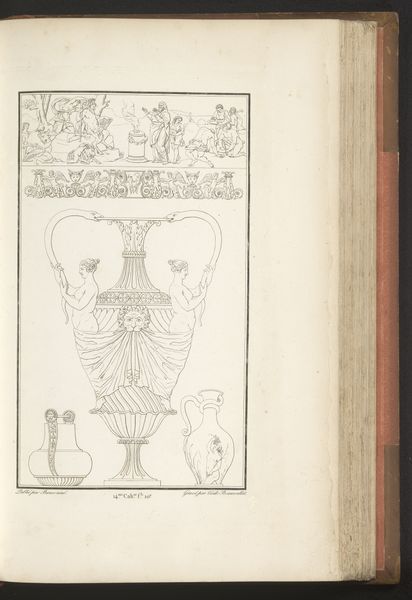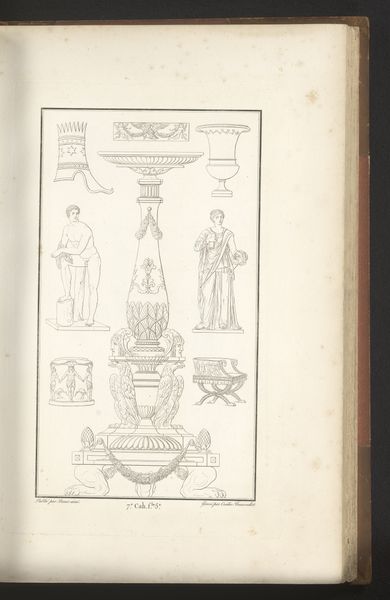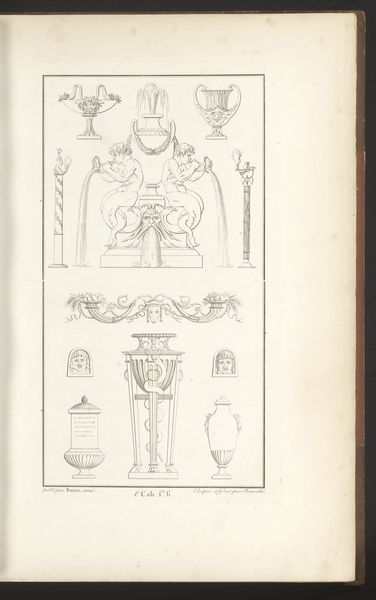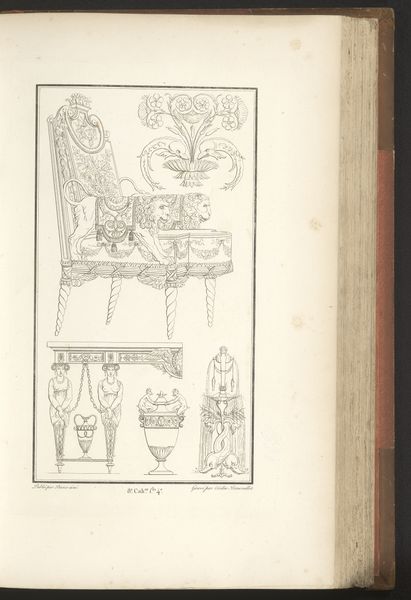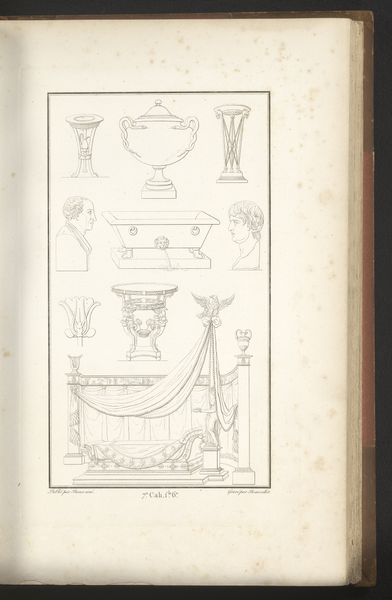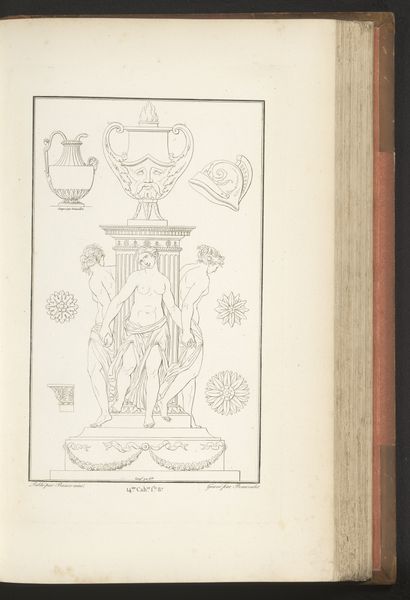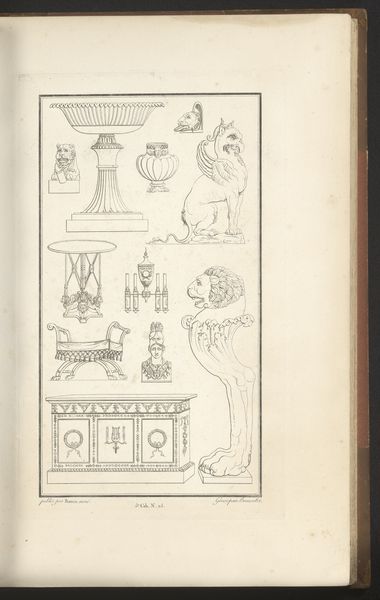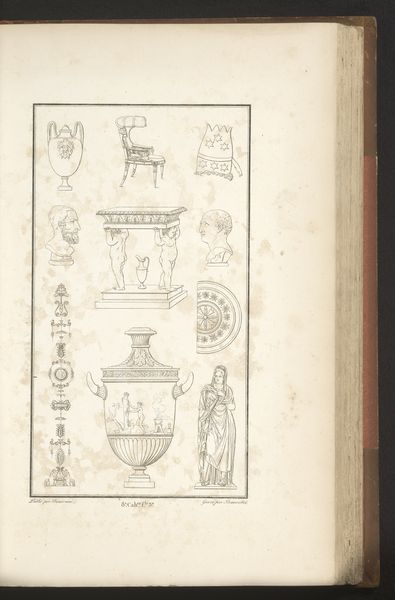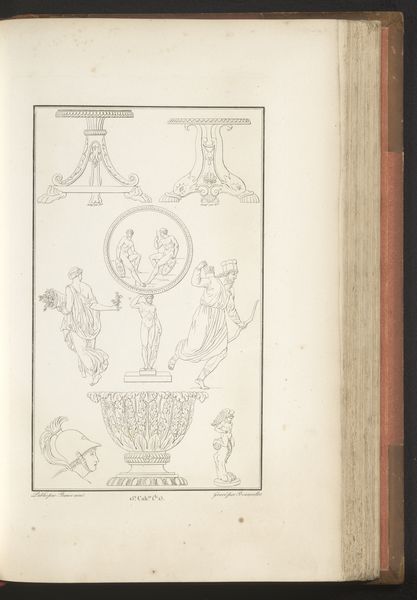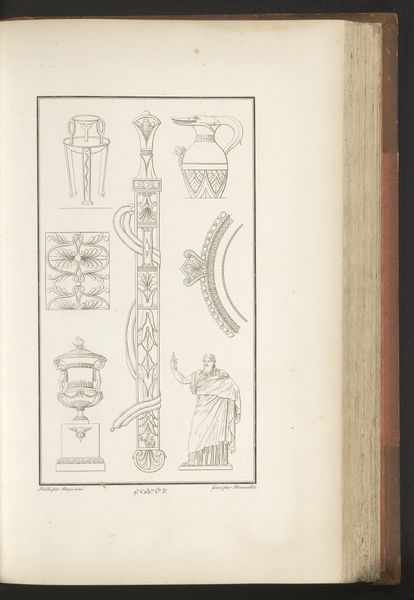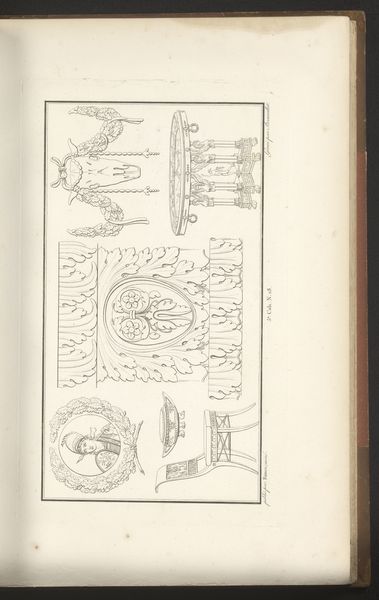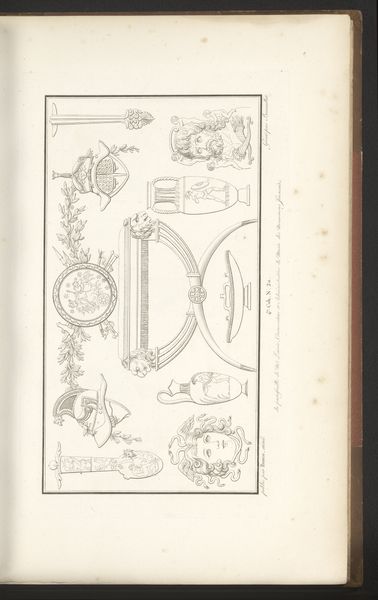
drawing, paper, ink
#
drawing
#
neoclacissism
#
paper
#
ink
#
academic-art
Dimensions: height mm, width mm
Copyright: Rijks Museum: Open Domain
Curator: This drawing is titled "Diverse ornamenten," made by Pierre-Nicolas Beauvallet around 1820, rendered in ink on paper. It presents a collection of Neoclassical design motifs. Editor: My first impression is one of austerity. The linework is so clean, precise. There's a chill elegance here, even in the depictions of cherubic figures. The balanced placement is satisfying, each object perfectly composed. Curator: It's very much a product of its time. Beauvallet was working during a period when Neoclassicism was dominant. These types of drawings were intended to serve as source material, circulating designs that reflected and reinforced prevailing ideologies about civic virtue. Editor: I'm struck by how these sketches almost act like architectural diagrams, each a little study of line and form. It almost strips these elements down to their essence. Notice the way light and shadow are conveyed purely through hatching. Curator: Precisely! These weren't simply aesthetic exercises. They were about conveying a particular vision of order, stability, and, dare I say, authority. It aimed to recreate what was interpreted to be the aesthetic of ancient Greece and Rome. Editor: Yet, within that very strict visual language, I see hints of playfulness, such as in the asymmetry of the top border design. There's a sense that the artist found some freedom within those constraints, wouldn't you agree? Curator: Perhaps. And I wonder, when these designs made their way into homes and public spaces, did they reinforce or challenge the socio-political order of the day? That tension is what makes this era and pieces like this interesting. Editor: Indeed. Thinking about the legacy of these ornamental forms is fascinating – from grand civic buildings to the smallest domestic details, these design choices are charged with meaning. This collection really makes one consider the potential inherent in art, and its intended usage as reference, source, and, as you mentioned, enforcer.
Comments
No comments
Be the first to comment and join the conversation on the ultimate creative platform.
